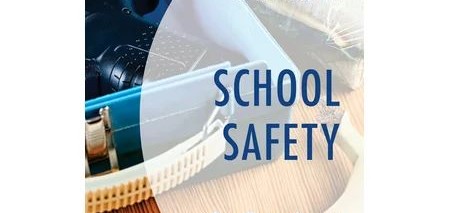Introduction:
In today’s world, ensuring the safety of students and staff within educational institutions is a top priority. The responsibility of maintaining a safe learning environment largely falls on school principals. We sought insight from eight school principals to find out how they cope with school safety fears and ensure that their campuses remain secure for all. Here are the strategies they shared.
1. Comprehensive Emergency Management Plan:
Principal A emphasized the importance of having a thorough emergency management plan in place. This plan should incorporate potential risks, responsive actions, drills, and regular review processes to keep it up-to-date and relevant.
2. Collaboration with Local Law Enforcement:
Principal B shared that forging strong relationships with local law enforcement can be vital in bolstering school security. By partnering with police, principals can gain valuable insights into security measures and receive assistance in tailoring initiatives to suit their unique contexts.
3. Professional Development Programs for Staff:
Principal C discussed the essential role of ongoing professional development programs for teachers and staff to ensure they are equipped to respond promptly during crises. These programs focus on developing skills such as risk assessments, communication, de-escalation techniques, and emotional support for affected individuals.
4. Enhanced Security Measures:
For Principal D, investing in advanced security equipment is key to addressing safety concerns. Measures like modern surveillance systems, visitor management software, alarm systems, and secured entry points all help create a more secure environment.
5. Encouraging Open Communication:
Principal E highlighted the need for open communication between students, staff, administration, and parents. This includes creating accessible channels for reporting suspicious activities or concerns without fear of backlash or stigma.
6. Mental Health Support Services:
In order to address the root cause of potential threats, Principal F believes that investing in mental health support services is crucial. Providing counseling services and wellness programs can help students cope with stressors and reduce the likelihood of dangerous behavior.
7. Regular Safety Drills:
Principal G shared that consistent safety drills are essential in preparing staff and students for potential emergencies. These may include fire drills, lockdown drills, and even specific active shooter training sessions to ensure everyone is knowledgeable on appropriate response protocols.
8. Building a Culture of Trust and Accountability:
Finally, Principal H emphasized the significance of fostering positive relationships within the school community. This involves nurturing a culture of trust, transparency, and accountability between students, parents, teachers, and administration to maintain a safe environment for everyone.
Conclusion:
As school leaders navigating an increasingly complex landscape, principals face significant challenges when it comes to ensuring the safety and well-being of their students and staff. By learning from these eight principals who have successfully implemented various strategies to address school safety fears, others can also adopt effective measures to protect their communities.





